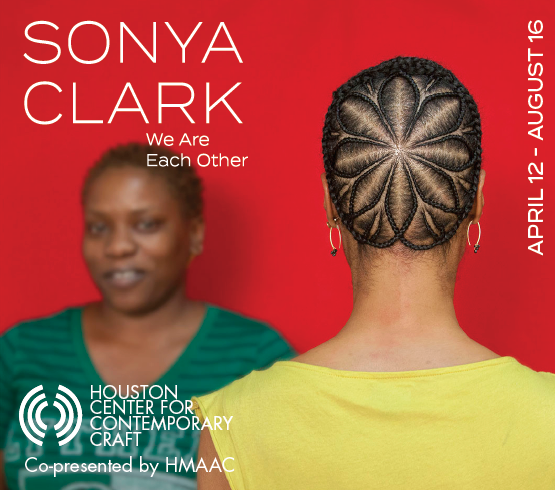Kehinde Wiley and Museum of Fine Arts, Houston Director Gary Tinterow first met in New York when Tinterow, then a curator at the Metropolitan Museum of Art, proposed the acquisition of Wiley’s The Veiled Christ, a large 2008 watercolor.
The 26 monumental sculptures and paintings in the show are an expansion of Wiley’s Down series from 2008, which was inspired by the violent deaths of Black people worldwide. Created during the COVID-19 pandemic, the murder of George Floyd, and the rise of the Black Lives Matter movement, the pieces are a result of Wiley’s ongoing investigation into the iconography of death in Western art.
“That is the archeology I am unearthing,” Wiley said in a statement about the show. “The specter of police violence and state control over the bodies of young Black and Brown people all over the world.”
The galleries have been transformed into a series of chapel-like spaces, with large paintings and bronze sculptures displayed against burgundy, dark blue, deep purple, and chestnut walls.
“This is not your usual museum space,” said Claudia Schmuckli, curator of the show at San Francisco’s de Young Museum, where it made its U.S. debut. “Perfectly framed and seemingly lit from within like stained glass windows, the paintings have an otherworldly drama and pathos.”
According to Tinterow, the lighting for the show was a challenge. They were able to achieve a spiritual effect with “projector lights,” which infuse the paintings with radiance but don’t spill onto the walls. Wiley was also involved in the lighting of his work, saying, “What I want is to create mystery.”

1 ⁄9
Kehinde Wiley, An Archaeology of Silence, 2021, bronze, courtesy of the artist and Galerie Templon. © 2021 Kehinde Wiley

2 ⁄9
Kehinde Wiley, The Virgin Martyr Cecilia (Ndey Buri), 2022, oil on canvas, courtesy of the artist and Galerie Templon. © 2022 Kehinde Wiley

3 ⁄9
Kehinde Wiley, The Virgin Martyr Cecilia (Ndey Buri), 2021, bronze, private collection. © 2021 Kehinde Wiley

4 ⁄9
Kehinde Wiley, Femme Piquée par un Serpent (Mamadou Gueye), 2022, oil on canvas, Fondation Louis Vuitton, Paris. © 2022 Kehinde Wiley

5 ⁄9
Kehinde Wiley, Femme Piquée par un Serpent, after Auguste Clésinger, 1847, 2021, bronze, private collection. © 2021 Kehinde Wiley

6 ⁄9
Kehinde Wiley, The Young Tarentine (Mamadou Gueye), after Alexandre Schoenewerk, 1871, 2021, bronze, Moco Museum, courtesy of the artist and Galerie Templon. © 2021 Kehinde Wiley

7 ⁄9
Kehinde Wiley, Young Tarentine I (Babacar Mané), 2022, oil on canvas, courtesy of the artist and Galerie Templon. © 2022 Kehinde Wiley

8 ⁄9
Kehinde Wiley, The Death of Two Soldiers (Ibraham Ndiaye & Babacar Mané), after John Singer Sargent, 1919, 2021, bronze, courtesy of the artist and Galerie Templon. © 2021 Kehinde Wiley

9 ⁄9
Kehinde Wiley, The Death of Hyacinth (Ndey Buri Mboup), 2022, oil on canvas, courtesy of the artist and Galerie Templon. © 2022 Kehinde Wiley
“I want people to pay attention,” Wiley said during his conversation with Tinterow. “People who look like me have been here throughout history, too. We all just want to be seen.”
One of the epic sculptures in the show is the title piece, An Archeology of Silence, a 13-foot bronze horse bearing a slain rider based on a Confederate monument portraying General J.E.B. Stuart. It was originally sited in Richmond, Virginia, but has been removed and replaced by Wiley’s Rumors of War. The face of the Black man slumped across the saddle is a digital composite of the faces of hundreds of Black men who died violently over a ten-year period.
No explanations are posted with the works of art because, according to MFAH Curator Anita Bateman, “Wiley prefers each of us to have our own response unmediated by words. He has created a sacred space where viewers can meditate on their reaction to the work.”
Schmuckli points out that the hyper-masculine figures are presented with feminine backgrounds. “Wiley achieves a hyper-visibility that refuses to be ignored,” she said. “There is minute attention to detail, down to the branded clothing of the hip-hop culture.” She notes that there is a subversive quality to Wiley’s work that challenges the viewer.
“These are poetic masterpieces executed with tenderness and compassion that invite everyone in,” Tinterow said. “Wiley’s elegies, at once sublimely beautiful and deeply disturbing, are profoundly moving, even unforgettable.”
—DONNA TENNANT





